Just a few short years ago it seemed that the wild oysters of Martha’s Vineyard had survived the apocalypse and were on their way to recovery. The trouble started sometime in the 1990s, unnoticed at first, when the pathogen that causes oyster dermo disease made its way to the Island’s great ponds. Harmless to humans but often deadly to oysters, it did not go unnoticed for long. Rick Karney, then the director of the Martha’s Vineyard Shellfish Group, had been on the lookout for signs of dermo, which had been spreading slowly up the East Coast from the Gulf of Mexico, where unusual oyster die-offs were first recorded in the 1940s. The culprit behind the deaths wasn’t properly taxonomized until the ’70s, by which time it was spreading northward along the Atlantic Coast.
As the pestilence swept up the coast in the late ’80s and early ’90s, Vineyard ponds seemed to stay clear. Karney wanted to keep it that way by making sure the oysters they were seeding were healthy. “Every year, we had to certify the animals we were working with were disease-free, so we’d send off our local brood stock to Dr. Roxanna Smolowitz,” he said. Smolowitz is a now-retired veterinary professor specializing in aquatic pathology, who connected with the Vineyard while serving as a researcher at Woods Hole Oceanographic Institution. “I did this every year, and it would come back clean, and everything would be fine,” said Karney.
In 1997, however, something changed. “She got back to me and was kinda a bit in shock. And she said, ‘Well, you know, you’ve got a lot of dermo in these animals.’” Karney now wonders if some earlier mysterious die-offs in the ’90s might have been dermo as well. In a Vineyard Gazette editorial from 1993 entitled “Disaster in the Great Pond,” the writer puzzled over the deaths: “Were the oysters starving? Are they being poisoned? Did they die from a lack of oxygen at the bottom? At this point it’s anyone’s guess.”

Regardless of when precisely the dermo outbreak started, what followed were a series of massive oyster die-offs, with infection rates upwards of 90 percent in Edgartown Great Pond, Tisbury Great Pond, Oyster Pond, and Sengekontacket Pond. It was touch-and-go in the early days of Island infection, Karney said, when officials were still writing the playbook on oyster disease policy.
“I remember one of the first things that happened was I got in trouble,” he said, recalling an earful he got from seafood sellers over customers not buying oysters due to illness concerns. Karney learned then to always start any conversation about dermo with the fact that the disease does not affect people. Later, when he recommended lifting harvest limits to enable a larger catch before the oysters all died, fishermen complained that he was trying to crash the market price.
“I knew a bit about dermo,” he said. “But as a result of having it in your own backyard, all of a sudden you look into it more.” After the initial shock, Karney started to develop a feel for how to handle an Island-wide infection.
As it turned out, so did the oysters. Whether as a result of the stalwart efforts by the shellfish group, who upped their program of growing and distributing oyster seed to shellfish constables, or because the years of die-offs naturally resulted in a population of oysters with greater resistance to dermo, the tide of disease seemed to turn. By the early 2010s the wild oyster fishery wasn’t close to truly recovered, but oyster health and populations were on the rise, and major dermo mortality events seemed to be subsiding. In 2015, the group stopped dermo testing on-Island.
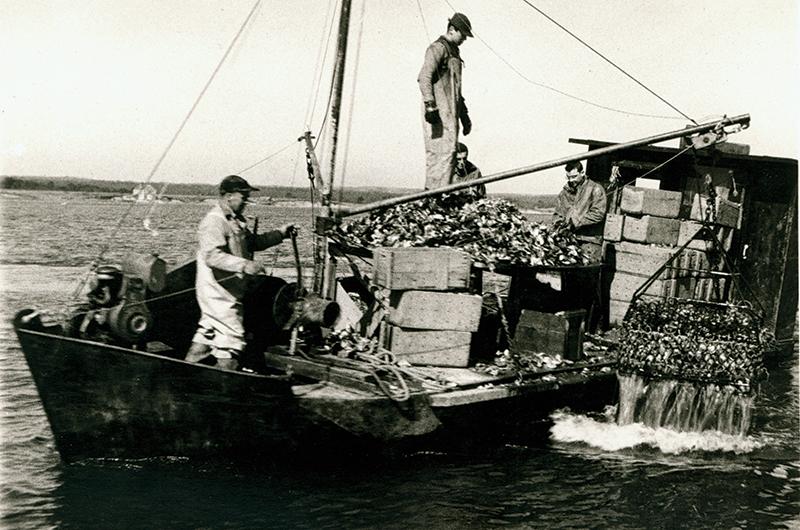
Then, in 2018, the oysters in the great ponds began to die again. The same thing happened in 2019. Dermo had returned. Although conditions have since stabilized, those researchers who studied dermo during the first go-around are now sprinting to find ways to protect the local oyster stock against the resurgent pestilence. Last year the Martha’s Vineyard Shellfish Group initiated a study into the genetic resilience of Island and lab-developed oyster strains, hoping to find an adaptation that might ballast what remains of the Vineyard’s wild oysters.
It’s hard, and perhaps heartbreaking, to remember now exactly how productive the Vineyard’s great ponds were just a generation ago. In the 1940s, when plots of land in Tisbury Great Pond were leased by the town to fishermen, one commercial oyster farmer could expect to bring in about 2,000 bushels, or 200,000 wild oysters, in a season. Tisbury Great Pond was legendary for its harvest, its bottom strewn with oysters growing atop oyster shells piled atop even older oyster shells. By contrast in 2011, after a particularly good oyster set, the same pond brought in just over 250 commercial bushels total. A body of water that once supported a dozen shellfishermen now seldom hosts more than two commercial permit holders.
It was a similar story in Edgartown Great Pond, where scallopers depended on the oyster harvest to supplement a bad scallop season. The bivalves were not only more prolific then; they were also longer lived, which meant bigger oysters. Retired Edgartown shellfish constable Paul Bagnall recalled one distinguished specimen he found about thirty years ago while working in Oyster Pond, located to the west of Edgartown Great Pond.
“The oysters, they had two shapes, and we used to call them the ‘banana’ and the ‘shoe,’” he recalled. “Well, I found one the size of a size-ten shoe. This one was five pounds, I was like, ‘Holy mackerel!’”
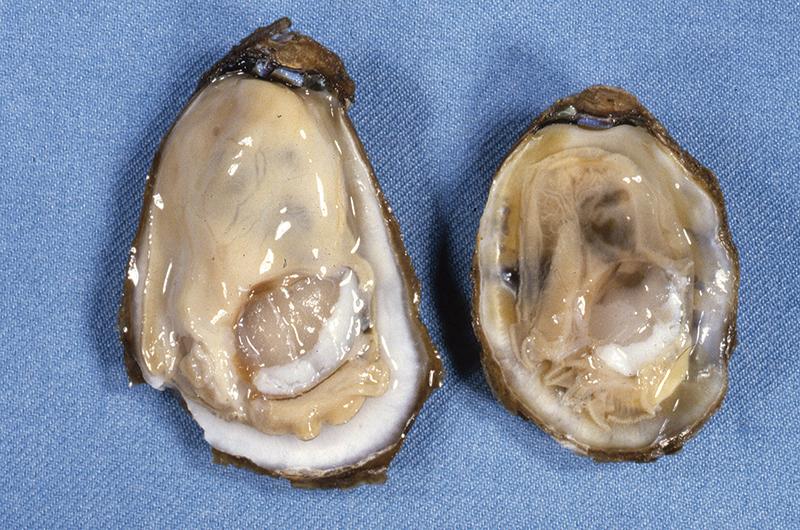
Bagnall sent off pictures to a scientist friend, who estimated it to be at least forty years old. “Those big ones, if they were female, must’ve been putting out thousands of eggs every year,” he said. Bagnall is, in fact, short in his estimate: the number is closer to fifty million eggs. Nowadays, embattled by chronic dermo, a wild oyster on the Vineyard seldom lives to see its fifth birthday. Even that life expectancy is a victory, compared to the first years of the infection.
The reasons behind the timing of dermo’s atmospheric rise (and oysters’ parallel fall) have long remained obscure. It’s exactly the kind of mystery that excites Ryan Carnegie, professor of shellfish pathology at the Virginia Institute of Maritime Science.
“I was always really captivated by the whole sort of disease-detective angle of research,” he said over the phone from his office in Gloucester Point, Virginia. “Trying to understand how these diseases were working and where the pathogens were lurking.”
Step one in solving the case was to profile the perpetrator that causes dermo disease – in this case, the single-celled Perkinsus marinus. Thought to be a kind of fungus when the microbe was first isolated in the ’50s, research over the following decades led to its reclassification as a protist, a microbe larger and more complex than a bacterium, with a cell structure more closely resembling an animal’s. A Perkinsus specimen begins life floating in the ocean, listlessly drifting on bits of organic matter, waiting to be picked up by its host.
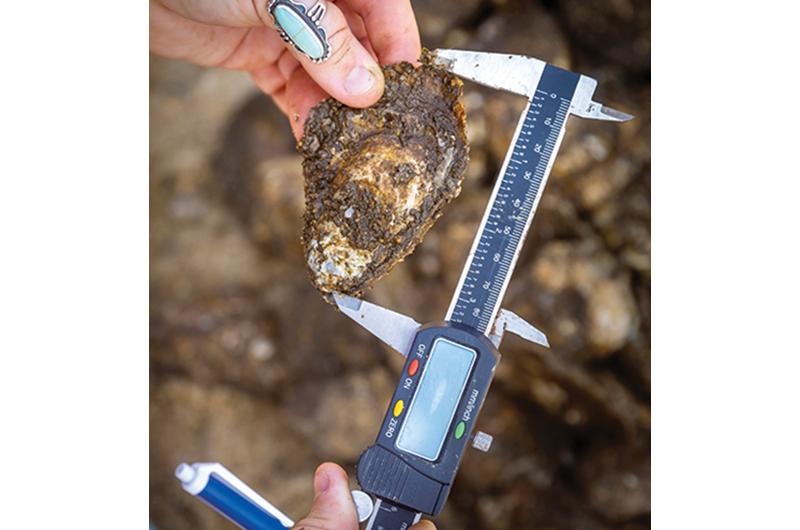
“The oyster encounters it while feeding, just sitting there on the bottom, filtering particles out of the water,” he said. Once an infected particle is ingested, Perkinsus multiplies across the oyster’s organ systems, eventually making its way to the bloodstream to infect the cells of its immune system. In the end, the strain is too much and the oyster perishes, releasing dead, infected tissue into the water to start the cycle all over.
Decades ago, Carnegie explained, this process was tempered by cold winters that Perkinsus couldn’t weather. But nowadays, as climate change warms waters across the eastern seaboard, parasites can more often survive the winter, giving them more time to spread and kill their hosts. And, in the case of dermo, allowing its range to expand northward.
But warming waters due to climate change are just one piece of the puzzle for the epidemic. In a recent study, researchers at Carnegie’s shellfish pathology laboratory dove into the archives, reexamining preserved infected oyster tissue samples going back six decades.
“We discovered this through retrospective analysis,” said Carnegie, “that in the ’80s the parasite got a lot worse; it was killing oysters much more quickly, producing much higher body burdens of infection.” The exact cause is uncertain, but Carnegie and his team have speculated that the emergence of a deadlier strain of Perkinsus was caused by adaptive pressure from another disease, MSX, which has also caused major oyster mortalities but has so far not hit the Vineyard.
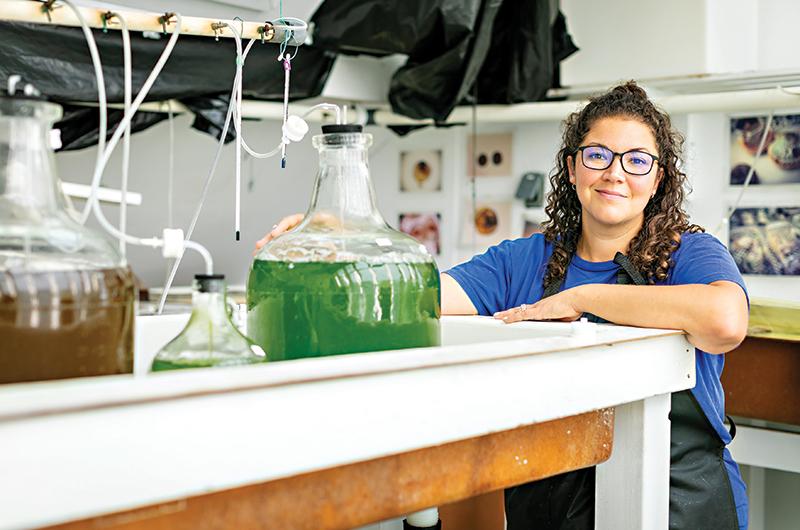
Previously, native pathogens such as Perkinsus were the only game in town, but when non-native and highly contagious diseases such as MSX started sweeping the eastern oyster population, Perkinsus evolved to become more virulent to stay competitive in that more crowded ecological niche.
“It’s this hyper-virulent strain that we still have on the East Coast today,” Carnegie said. Its virulence has helped the disease spread as far north as Nova Scotia, though the disease has yet to make it to wild Pacific oysters.
“The great ponds, they’re kind of like a petri dish,” said Emma Green-Beach, who started working with Karney at the shellfish group in 2006, when great pond oysters were a decade into the siege. “There’s all kind of funkiness that oysters have to deal with.”
The declining water quality in the great ponds over the same decades that dermo was advancing has complicated the fight against the disease. Nitrogen pollution from septic systems and lawn fertilizers is the major challenge, as those nutrients cause algae blooms that suck up oxygen and suffocate shellfish. Poor environmental conditions also leave them susceptible to native predators, such as the oyster drill (a snail that bores its way through oyster shells), and non-native ones, such as the green crab. All shellfish deal with these stressors to some degree, but only oysters must contend with dermo, which does not affect other bivalves, including scallops and clams.
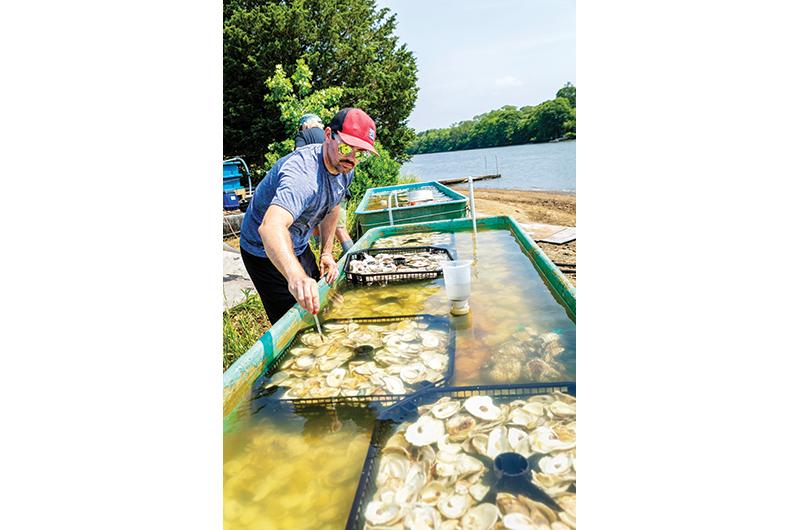
With all these ongoing threats, it might seem that the oyster would have had little energy to battle a new hyper-virulent parasite. And yet, after a few bad years in the beginning, the worst effects of dermo began to subside.
“When I started talking to [Karney] about what’s special about shellfish on the Vineyard…one of the first things that I remember him bringing up was dermo,” Green-Beach said. In monitoring the great pond oyster populations, he observed that a population rebound would often occur after a die-off.
“We would get a really remarkable spawn from the survivors…and eventually we had animals that we thought had some tolerance or resistance,” he said. “It almost mirrors what you would do in a laboratory if you wanted to select for animals that were tolerant or resistant to the disease.”
This was the topic that Green-Beach took up for her master’s thesis while studying ecology at Rutgers University in New Jersey. In 2011, she completed her study, “Dermo Disease on Martha’s Vineyard: Infections of Perkinsus marinus and its Influence on Oyster Host Population Structure.”

“They are contained systems,” Green-Beach said of the conditions of wild oysters in the ponds. It is no coincidence that most Vineyard oysters are now farmed in the ocean, where water circulates more regularly. In the ocean, particles containing dermo infections are much more likely to be swept away before they can be taken in by the bivalve. The higher salinity level, as well, helps to prevent infection.
In 2016, Karney retired from his role as director of the shellfish group after forty years, and Green-Beach took over the position. On an Island still beset with dermo, she is uniquely suited for the job. “I looked at the population genetics and the population structure. And…the genetic markers showed that the Edgartown Great Pond oysters were, in fact, more resistant” than other oyster populations, she said of her research. “But it was hard to see if that was actually reflected in the pathology.”
What made the resistance of Edgartown oysters especially interesting is that scientists had been trying unsuccessfully to develop dermo-resistant oysters in the lab. As the director of Rutgers’s Haskin Shellfish Research Laboratory (and Green-Beach’s thesis advisor) David Bushek noted, the conventional process to breed disease-tolerant strains is simple: let the sick ones die and breed the survivors. “People had been trying that with dermo, and it didn’t work,” he said.
And yet it seemed that things were getting better on the Vineyard. The shellfish group didn’t need lab oysters, since the big die-offs stopped and oyster life expectancy slowly began ticking up again. Until, as mentioned above, the disease returned in force. “In 2018 everything died,” Green-Beach said, “and then again in 2019.”
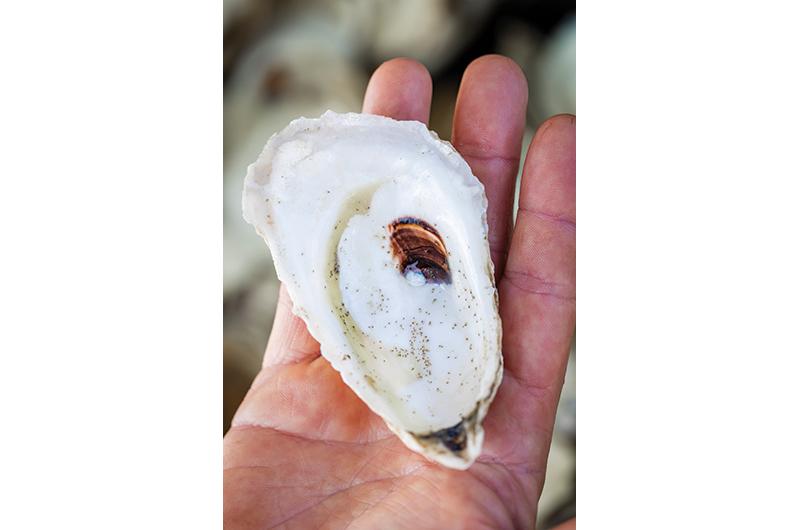
The two die-offs coincided with a series of warm winters and dry summers, creating perfect conditions for dermo outbreaks. Though recent years haven’t been quite as bad, the shellfish group is ramping up efforts to help maintain oyster presence in the ponds. Last year the organization began a study to compare the tolerance level of different oyster strains – one from each of the great ponds, and one bred at the Haskin labs. It is being undertaken with funds from the Edey Foundation, which sponsors environmental programs on-Island, as well as funds granted by the West Chop Community Fund.
One positive development is that with more advanced breeding techniques developed over the past decade, Bushek said, the new lab-lines now have a greater leg up against disease. “If an oyster appears to be tolerant, or maybe a little bit resistant, it’s not one or two genes that control it. There are hundreds of them, and they’re spread across the entire genome,” he said of the recent discoveries. “As a result of that, they’re linked to every other trait that’s in the oyster.”
Informed by that dynamic, scientists now employ a strategy known as genomic selection, crunching massive amounts of genetic data (with the help of powerful computers) to select which oysters to breed. It’s the same old selective breeding strategy, Bushek said, just better informed.
For the shellfish group, the path to future restoration efforts remains undecided. If each of the strains under study die, there’s not much they can do, at least not genetically speaking. But if the shellfish group finds that the laboratory strains are resistant, they could incorporate their genetics into Island stocks. To get wild oysters back to thriving on-Island, Green-Beach said, they may need to be open to introducing new genetic material into the mix.

“Ideally, what you do in a situation like that is try to cross the lab lines into some local lines, hopefully getting the best of both worlds,” Karney said, noting that local oysters might contribute their own adaptations to the mix.
There are other reasons for hope for Island oysters, said Green-Beach. An improvement in pond water quality would go a long way to helping them fight off disease, she said. Even as carbon dioxide pollution raises ocean acidity and threatens other shellfish, oysters are already adapted to challenging, acidic estuary environments. Oysters, out of all the shellfish, are particularly well equipped for climate change. “They evolved at the mercy of the wind and the tide, and they can’t move, so they are super hardy…it’s not like a scallop, which can just swim away,” Green-Beach said.
Oyster genes, in fact, carry an adaptation particular to that sessile lifestyle, as Bushek explained: a trait called genetic plasticity. “Oysters have a very high amount of genetic material and genetic variation,” he said, “and the reason people hypothesize they have so much extra genetic information is because…they’re fixed in place. They need to be able to adapt to whatever condition they are in.”
It is the same trait that allows the Eastern oyster, native to the Vineyard, to thrive as far north as Nova Scotia and as far south as Brazil. And even as someone who has spent his life fighting on the front lines of the world’s worst oyster diseases, Bushek still has a lot of hope for the indomitable bivalve.
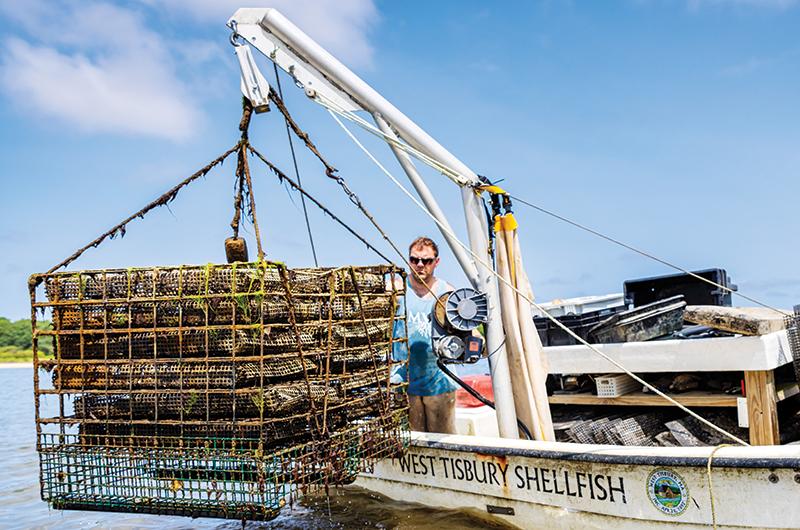
“I really do think there is a bright future,” he said. “They are a malleable species and adaptable little species that I think will be around for a long time.”

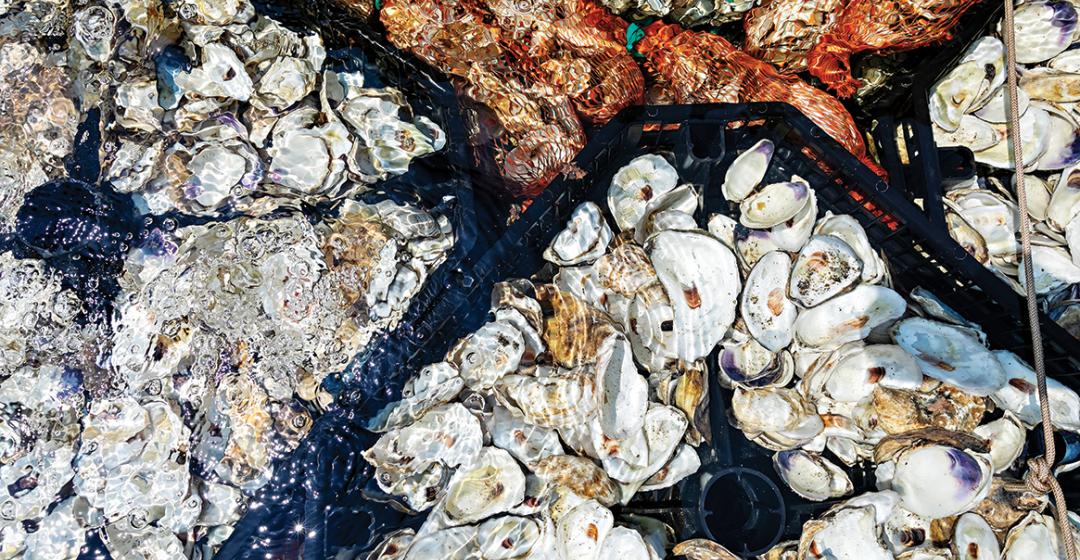


 1 comment
1 comment
Comments (1)